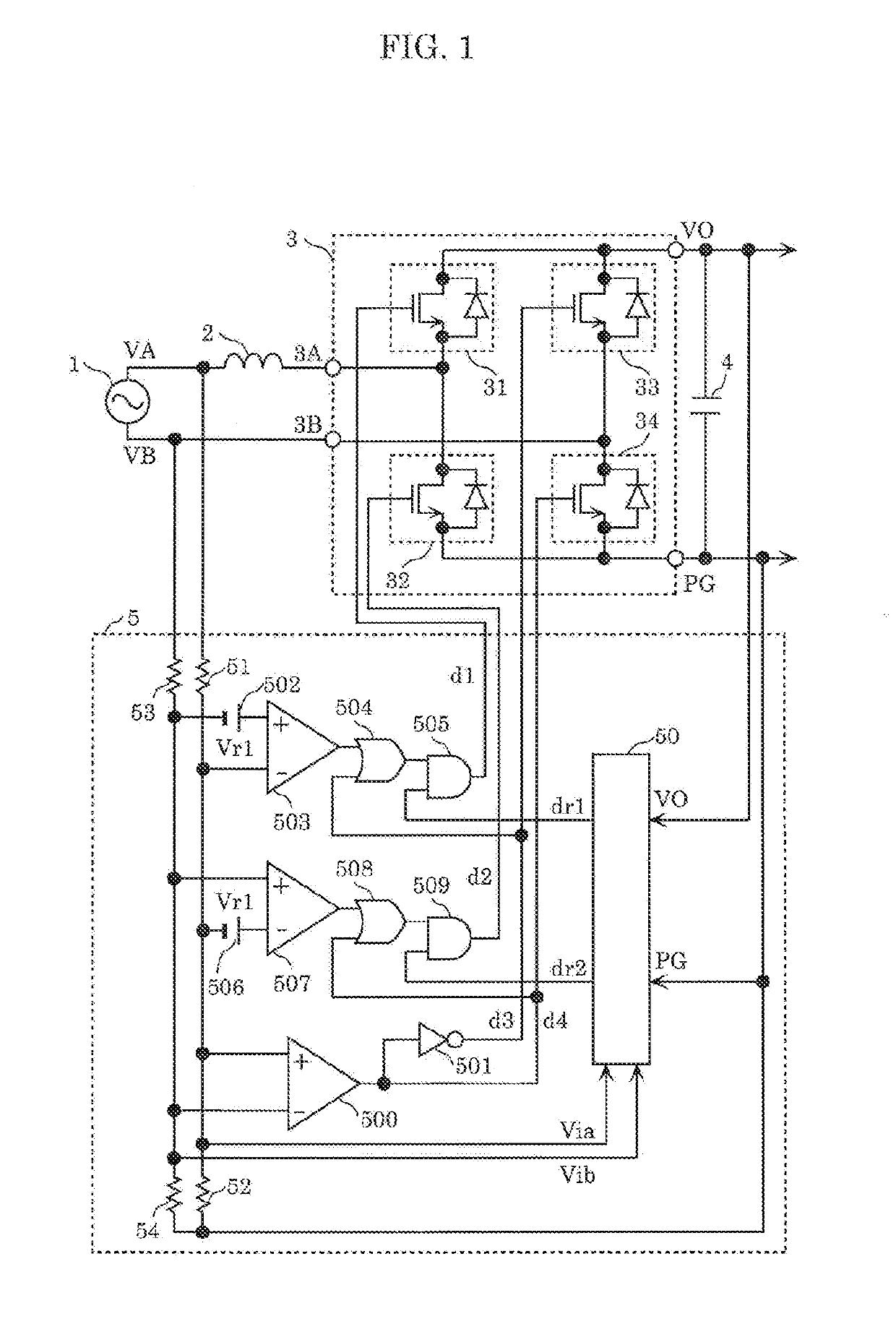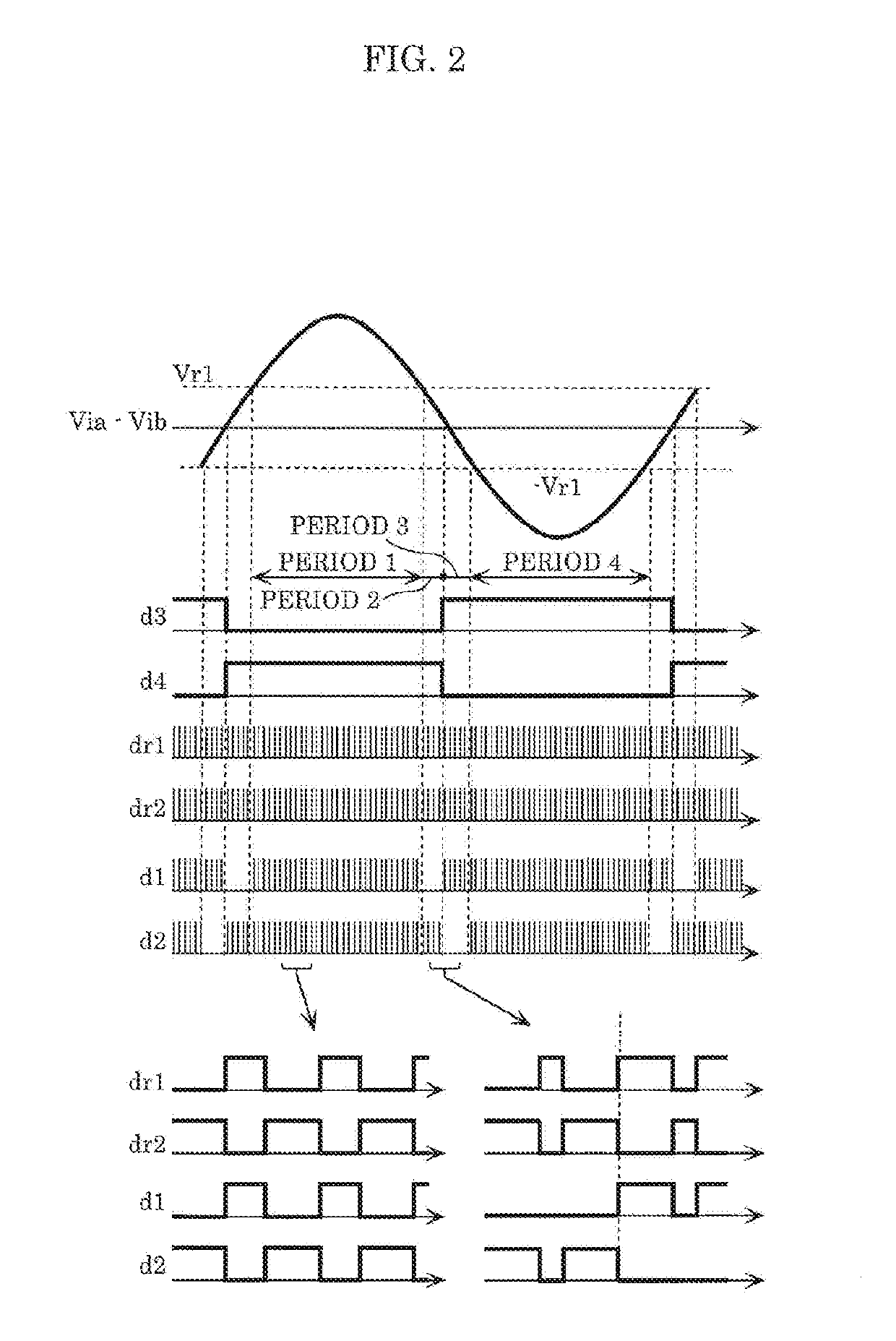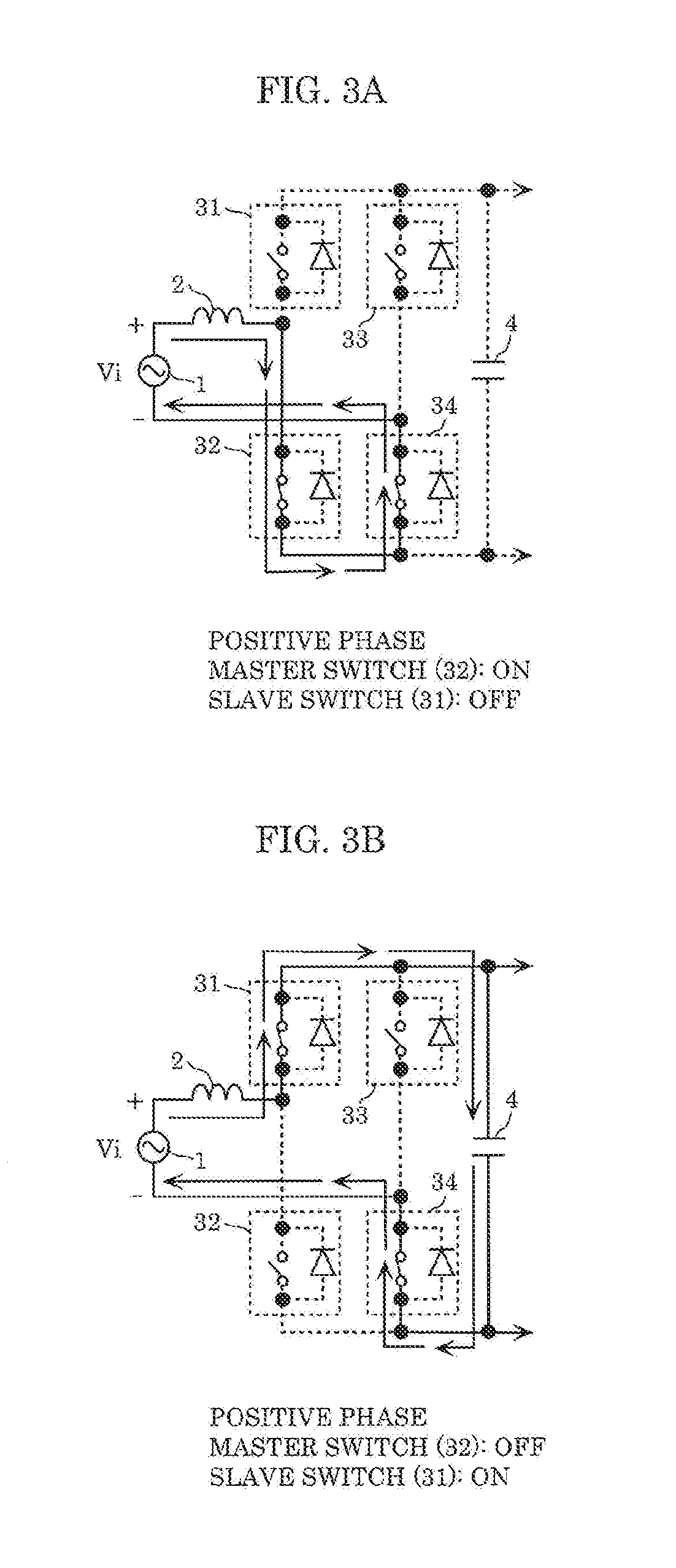Power-factor correcting converter
a converter and power factor technology, applied in the field of power factor correcting converters, can solve the problems of reducing increasing the conduction loss, and preventing the reduction in the size so as to improve the efficiency of the power factor correcting converter, reduce the effective value of the inductor current, and reduce the conduction loss
- Summary
- Abstract
- Description
- Claims
- Application Information
AI Technical Summary
Benefits of technology
Problems solved by technology
Method used
Image
Examples
embodiment 1
[0062]The following describes the power-factor correcting converter according to Embodiment 1 of the present disclosure with reference to the drawings.
[0063]FIG. 1 is a circuit configuration diagram of a power-factor correcting converter according to Embodiment 1. The power-factor correcting converter according to the present embodiment includes inductor2, bridge circuit 3, output capacitor 4, and control circuit 5, as shown in FIG. 1.
[0064]Input AC power source 1 is connected to first power source terminal VA and second power source terminal VB and outputs input AC voltage Vi to first power source terminal VA and second power source terminal VB. Inductor 2 is connected in series to input AC power source 1. Bridge circuit 3 receives input AC voltage Vi at first input terminal 3A and second input terminal 3B via inductor 2. Output capacitor 4 is connected to output terminals VO and PG of bridge circuit 3 and outputs output DC voltage Vo. Bridge circuit 3 includes first higher-potenti...
embodiment 2
[0098]FIG. 9 is a circuit configuration diagram of a power-factor correcting converter according to Embodiment 2. FIG. 10 shows waveforms of the operating power-factor correcting converter according to Embodiment 2. FIG. 11A shows the current path of the power-factor correcting converter according to Embodiment 2 in the case of the positive phase, and FIG. 11B shows the current path of the power-factor correcting converter according to Embodiment 2 in the case of the negative phase. In FIG. 9, the same components as those of the power-factor correcting converter according to Embodiment 1 shown in FIG. 1 have the same reference numerals and will not be described. The power-factor correcting converter according to Embodiment 2 differs from the power-factor correcting converter according to Embodiment 1 in FIG. 1 in terms of the configuration of the control circuit, and the control circuit in the present embodiment is called control circuit 5A to be distinguished from control circuit 5...
embodiment 3
[0103]FIG. 12 is a circuit configuration diagram of a power-factor correcting converter according to Embodiment 3. In FIG. 12, the same components as those of the power-factor correcting converters according to Embodiment 1 shown in FIG. 1 and Embodiment 2 shown in FIG. 9 have the same reference numerals and will not be described. The power-factor correcting converter according to the present embodiment differs from the power-factor correcting converters according to Embodiments 1 and 2 in terms of the configuration of the control circuit, and the control circuit in the present embodiment is called control circuit 5B to be distinguished from control circuits in Embodiments 1 and 2. Control circuit 5B differs from control circuit 5A of the power-factor correcting converter according to Embodiment 2 in terms of the following points: That is, first reference voltage source 502, second reference voltage source 506, comparators 503 and 507, OR circuits 504 and 508, and AND circuits 505 a...
PUM
 Login to View More
Login to View More Abstract
Description
Claims
Application Information
 Login to View More
Login to View More - R&D
- Intellectual Property
- Life Sciences
- Materials
- Tech Scout
- Unparalleled Data Quality
- Higher Quality Content
- 60% Fewer Hallucinations
Browse by: Latest US Patents, China's latest patents, Technical Efficacy Thesaurus, Application Domain, Technology Topic, Popular Technical Reports.
© 2025 PatSnap. All rights reserved.Legal|Privacy policy|Modern Slavery Act Transparency Statement|Sitemap|About US| Contact US: help@patsnap.com



